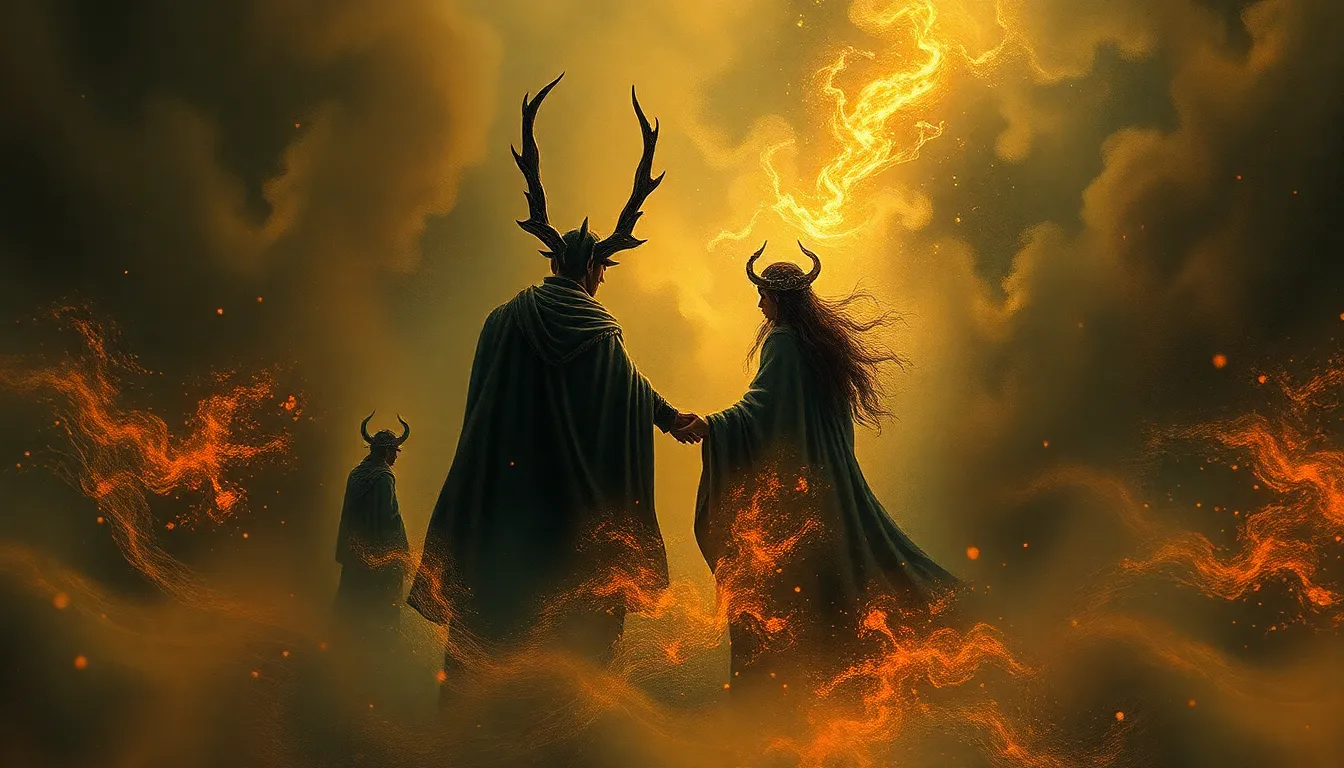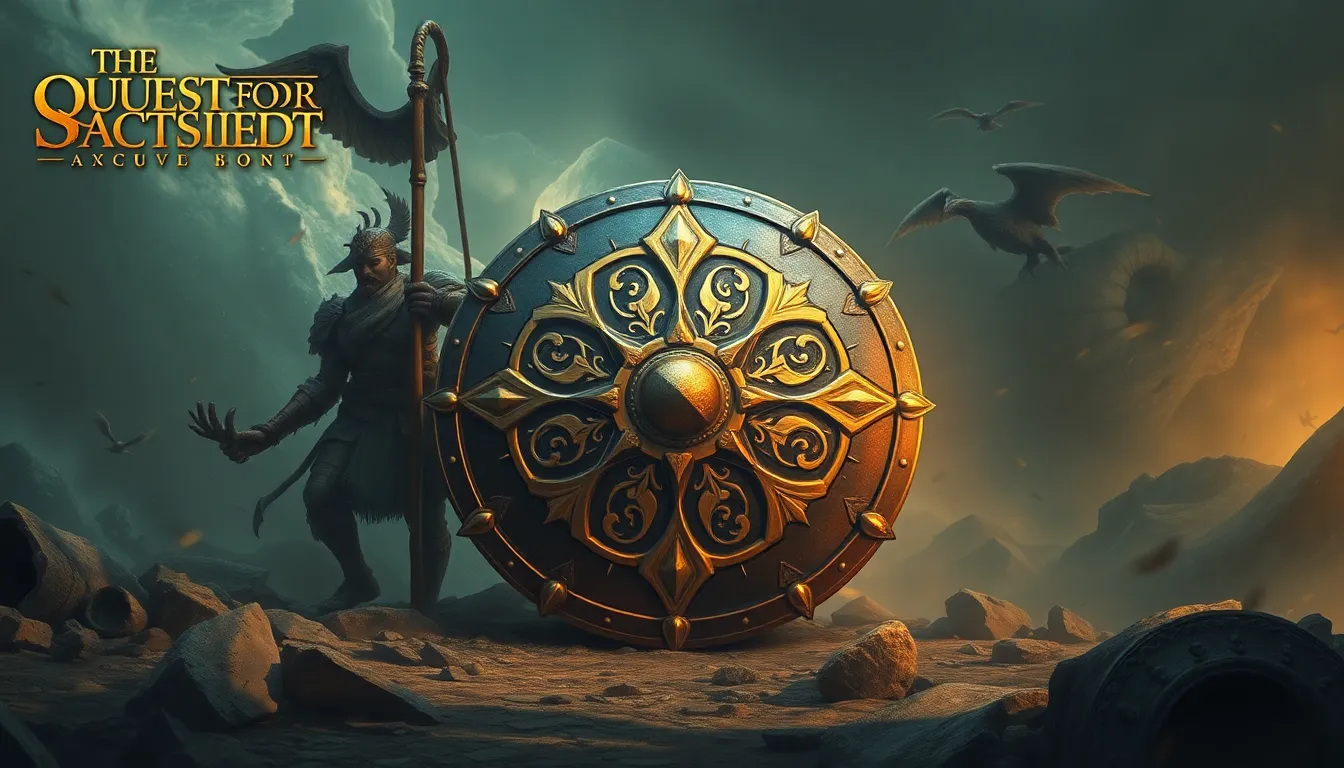Myth & Ritual: How Garuda’s Legacy Shapes Religious Practices
I. Introduction
Garuda, a celestial bird and the mount of Lord Vishnu in Hindu mythology, serves as a powerful symbol of strength and protection. This mythical creature is not only a significant figure in Hinduism but also plays a vital role in Buddhism and various South Asian cultural traditions. The interplay of myth and ritual forms the backbone of religious practices, providing a framework for understanding divine narratives and their manifestations in everyday life.
This article aims to explore Garuda’s influence on religious traditions across cultures, examining how this legendary bird shapes rituals, beliefs, and artistic expressions.
II. The Origins of Garuda in Mythology
A. Historical context of Garuda in Hindu and Buddhist texts
Garuda’s origins can be traced back to ancient texts, primarily the Vedas and the Puranas in Hinduism, where he is depicted as the king of birds. In Buddhist texts, Garuda is also portrayed as a formidable being, often engaged in battling serpents and symbolizing the victory of good over evil.
B. Symbolism associated with Garuda: power, protection, and transformation
Garuda represents various significant concepts, including:
- Power: As a giant bird, Garuda embodies immense strength and sovereignty.
- Protection: He is often invoked for protection against evil forces and is seen as a guardian figure.
- Transformation: Garuda symbolizes the journey of transformation, breaking free from material constraints and achieving spiritual liberation.
C. Garuda’s role in the cosmology of South Asian religions
In the cosmology of South Asian religions, Garuda serves as a bridge between the earthly and the divine, often depicted soaring through the skies, representing the soul’s ascent to higher realms. His presence is felt throughout various religious narratives, reinforcing the interconnectedness of life and the divine.
III. Garuda in Hindu Practices
A. Garuda’s significance in Hindu rituals and worship
In Hinduism, Garuda holds a place of reverence as the vehicle of Lord Vishnu. Devotees often chant hymns and perform rituals dedicated to Garuda for health, prosperity, and protection against adversities. The Garuda Purana, one of the major Puranic texts, elaborates on his attributes and the importance of worshiping him.
B. Iconography and representations in temples
Garuda is frequently depicted in temple iconography, portrayed with a human body, bird-like features, and a beak. Statues and carvings of Garuda are found in many temples, often positioned near the sanctum sanctorum, symbolizing vigilance and safeguarding the sacred space.
C. Festivals and celebrations dedicated to Garuda
Several festivals celebrate Garuda, including:
- Garuda Jayanti: This festival commemorates the birth of Garuda and is celebrated with various rituals and prayers.
- Vishnu Jayanti: As the mount of Lord Vishnu, Garuda is honored during this festival, emphasizing his role in the divine narrative.
IV. Garuda’s Influence in Buddhism
A. Garuda’s role in Buddhist narratives and texts
In Buddhist mythology, Garuda is often described as a protector of the Buddha and his teachings. He is featured in various Jataka tales, where he is depicted as a benevolent being who helps those in distress.
B. Ritual practices involving Garuda in Buddhist cultures
Buddhist rituals sometimes incorporate Garuda as a symbol of protection and speed. Offerings and chants may be dedicated to Garuda, especially in cultures where he is seen as a guardian figure against negativity and spiritual harm.
C. Comparative analysis of Garuda’s representation in Hinduism and Buddhism
While both Hinduism and Buddhism revere Garuda, their interpretations differ. In Hinduism, he is primarily a divine vehicle and protector, while in Buddhism, he is more often seen as a symbol of benevolence and protection against evil influences. This divergence highlights the adaptability of myths across cultures.
V. Regional Variations of Garuda’s Legacy
A. Garuda’s presence in Southeast Asian cultures (e.g., Indonesia, Thailand)
Garuda’s influence extends beyond South Asia into Southeast Asia, particularly in Indonesia and Thailand, where he is integrated into local cultures and religions.
B. Adaptations and reinterpretations of Garuda in local myths and rituals
In Indonesia, Garuda is a national symbol and is portrayed in various forms in art and architecture. In Thailand, Garuda is featured prominently in royal iconography and is seen as a protector of the kingdom.
C. The impact of colonialism and globalization on Garuda’s legacy
Colonialism and globalization have influenced the portrayal and understanding of Garuda, sometimes leading to a blend of traditional beliefs with modern interpretations. This has resulted in both the preservation and transformation of Garuda’s legacy in contemporary societies.
VI. Symbolism and Modern Interpretations
A. Contemporary depictions of Garuda in art and literature
In modern literature and art, Garuda continues to inspire creativity, often symbolizing freedom, strength, and resilience. Artists and writers draw upon his rich mythology to convey themes of liberation and transformation.
B. The role of Garuda in modern spiritual practices and New Age beliefs
Garuda has found a place in New Age spiritual practices, often associated with healing and protection. His image is used in various forms of meditation and spiritual rituals, emphasizing his enduring significance in contemporary spirituality.
C. Garuda as a symbol of national identity in various countries
In countries like Indonesia and Thailand, Garuda is not only a religious symbol but also a national emblem, representing the cultural identity and heritage of the people.
VII. Challenges and Controversies
A. The appropriation of Garuda in popular culture
Garuda’s image has been appropriated in popular culture, sometimes leading to misinterpretations of its original significance. This can dilute the spiritual and cultural meanings attached to him.
B. Conflicts arising from differing interpretations of Garuda across cultures
As Garuda’s image travels across cultures, differing interpretations can lead to conflicts, especially when sacred symbols are commercialized or misrepresented.
C. Preservation of traditional practices in a rapidly changing world
In a world that is rapidly changing due to globalization and modernization, preserving traditional practices associated with Garuda is essential for maintaining cultural identity and heritage.
VIII. Conclusion
Garuda’s enduring legacy in religious practices underscores the profound impact of myth and ritual on cultural identity. As a symbol of power, transformation, and protection, Garuda continues to resonate across various traditions, adapting to the needs of contemporary societies while preserving its ancient roots.
Moving forward, the study of Garuda and its influence on spirituality will provide valuable insights into the ongoing interplay of mythology, culture, and faith in an ever-evolving world.



